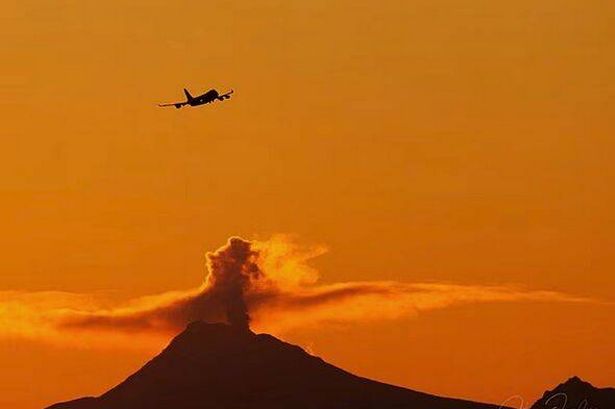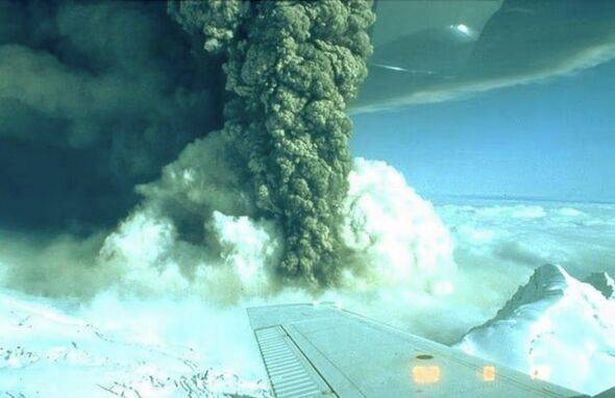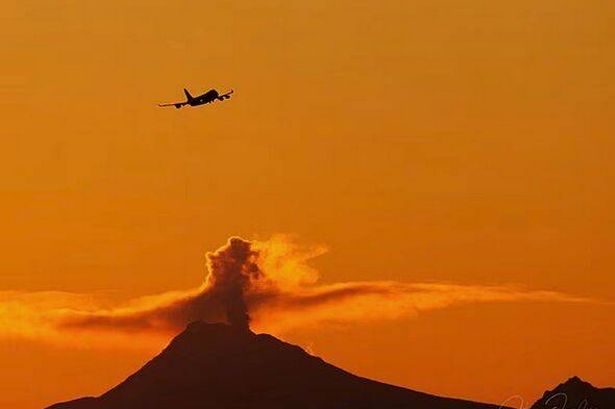A magnitude 4.6 earthquake has hit Alaska just miles from Mount Spurr, which has been showing signs of unrest and is at risk of an imminent volcanic eruption
23:36, 06 Aug 2025Updated 23:38, 06 Aug 2025

An earthquake has struck just miles north of an Alaskan volcano currently showing signs of unrest and the potential for eruption.
The US Geological Survey reported a magnitude 4.6 tremor near Petersville, roughly 86 miles from Mount Spurr.
According to the Alaska Earthquake Center: “We have reviewed a M4.6 earthquake that occurred at 10:38 a.m. local time, 52.4 miles deep and 34 miles north of Skwentna.”
The centre added, “This event was felt throughout Anchorage and the Matanuska-Susitna region.” The news comes on the same week as a significant earthquake was strong enough to be felt in parts of the UK.
Anchorage, which sits more than 100 miles from the epicentre, also experienced tremors, reports the Express.
Nearly 200 reports of shaking have been submitted to the USGS from this sparsely populated area, which has been on the brink of a volcanic eruption in recent months.
Mount Spurr remains under an ‘Advisory’ due to low-level unrest, with occasional small earthquakes being detected beneath the volcano.

A 2021 study published in Nature revealed that most volcanoes—especially those already displaying signs of unrest like Mount Spurr—can be triggered to erupt by nearby earthquakes.
Magma buildup
The risk increases when magma pressure and underground gas buildup are present.
The USGS said the earthquake was detected 52 miles below the surface, a depth at which energy tends to spread more widely.
This means that whilst shaking may be felt over a large area, it is often less intense unless the quake’s magnitude is particularly high. Residents right across Anchorage took to social media to share what they’d experienced.
Melissa Palmer wrote on Facebook: “[I] felt it in Anchorage (Airport Heights).”
Others reported tremors in Sand Lake and north of Healy.
The Petersville area lies directly above the Broad Pass thrust fault – a southeast-vergent fault which created the Peters Hills basin. The Broad Pass thrust fault continues to be active and has the potential to trigger devastating earthquakes measuring between magnitude 7.6 to 7.8, creating a major seismic threat.
Could Anchorage evacuate?
With almost 300,000 residents calling Anchorage home, locals have been keeping a close eye on Mount Spurr since March, when experts cautioned that an eruption might be on the cards.
The Alaska Volcano Observatory (AVO) released its most recent bulletin on Tuesday, revealing: “Low-level unrest continues at Mount Spurr with occasional, small earthquakes occurring beneath the volcano. Nothing was observed in partly cloudy to clear satellite images over the past day. Clear webcam views of Mount Spurr’s summit crater showed minor vapor emissions.”
The AVO further observed: “Fluctuations in unrest are common at volcanoes and eruptive activity remains possible, but unlikely.”
They clarified that comparable drops in activity had been witnessed prior to the 1992 eruptions, with seismic movement varying before explosive events.
What is the history of Mount Spurr?
During Mount Spurr’s previous ‘Watch’ status, heightened gas concentrations were recorded from both its peak and lateral vent – the identical vent which last blew in 1992. During this period, Matt Haney, the scientist-in-charge at the AVO, informed DailyMail.com that any eruption would most likely occur at the Crater Peak side vent and would be explosive.
Such an event could send multiple ash plumes up to 50,000 feet into the air.
Each explosive episode would last three to four hours, with ash clouds potentially covering Anchorage and neighbouring communities in dust. An eruption would also trigger destructive mudslides and avalanches of volcanic debris racing down Mount Spurr at speeds exceeding 200 miles per hour.
“Fortunately, there are no communities in that radius that would be affected,” Haney said.









